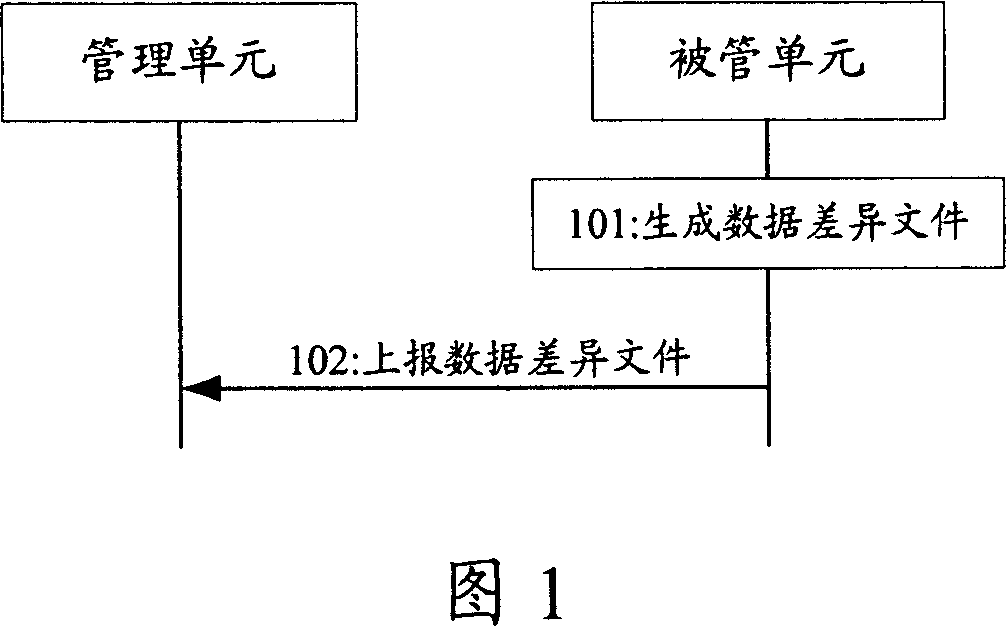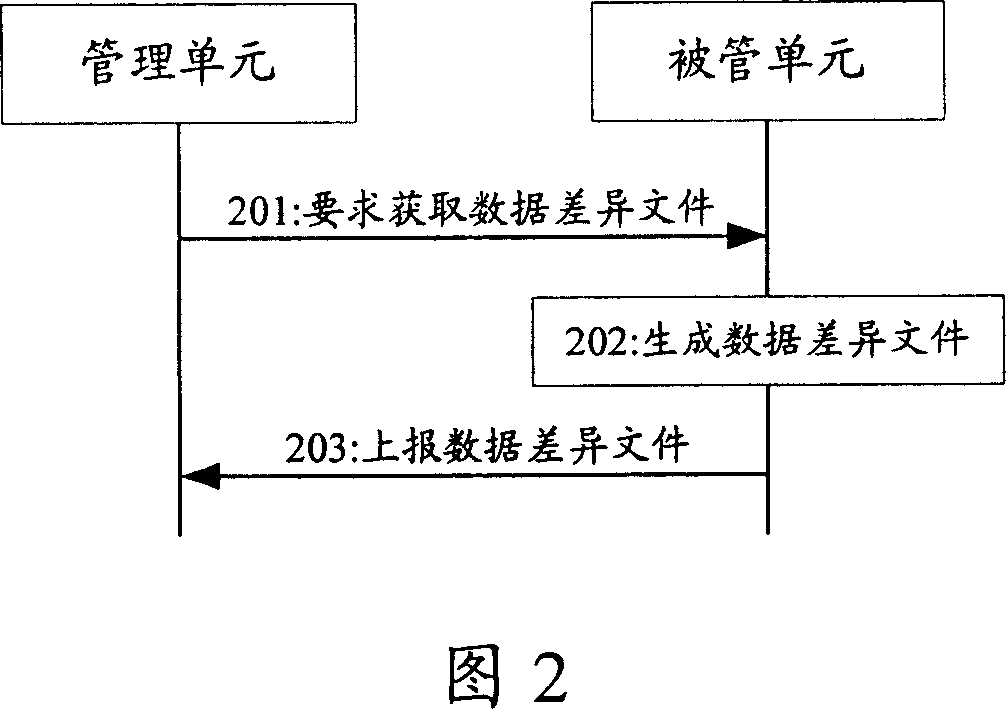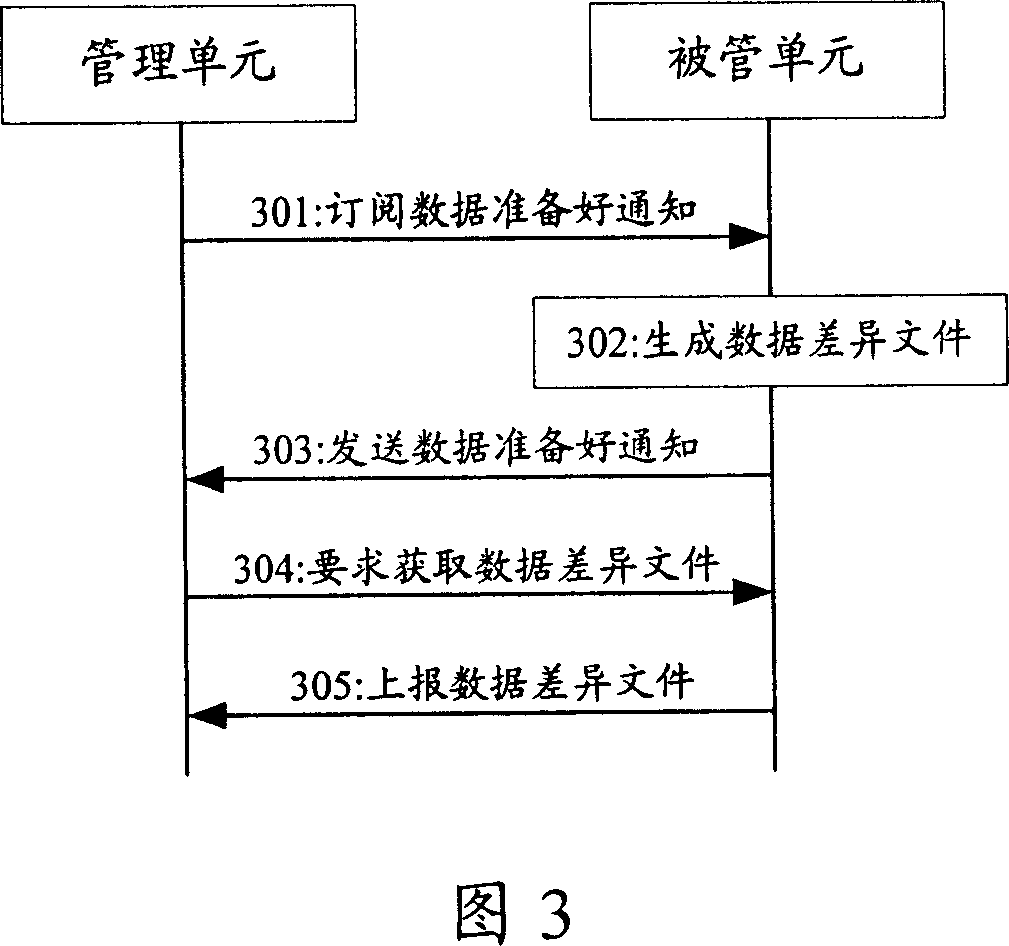Data synchronisation method and system
A data synchronization and data difference technology, applied in the field of network management, can solve the problems of huge data volume, increase system burden, and long time consumption, and achieve the effect of reducing data volume, reducing impact, and ensuring consistency
- Summary
- Abstract
- Description
- Claims
- Application Information
AI Technical Summary
Problems solved by technology
Method used
Image
Examples
no. 1 example
[0047] Referring to Fig. 1, the first embodiment of the present invention comprises the following steps:
[0048] Step 101, the managed unit generates a data difference file according to its own data modification content in a predetermined period, that is, obtains the data changed in the predetermined period.
[0049]In step 101, the managed unit may generate the data difference file only after a self-defined trigger condition or a trigger condition agreed with the management unit is met. The trigger condition mentioned in this embodiment may be a timing trigger condition or a fixed event trigger condition. The timing trigger condition refers to the time period, such as every 8 hours, every 2 days or every week; the timing trigger condition can be a specific event, or a predetermined number of discrete events, such as the cumulative occurrence of n times of network configuration event.
[0050] Step 102, the managed unit reports the generated data difference file to the mana...
no. 2 example
[0053] With reference to Fig. 2, the second embodiment of the present invention comprises the following steps:
[0054] In step 201, the management unit requests the managed unit to obtain a data difference file, that is, requests the managed unit to perform a data synchronization operation.
[0055] In step 201, the management unit may request the managed unit to obtain the data difference file only after a self-defined trigger condition or a trigger condition agreed with the management unit is met. The trigger condition mentioned in this embodiment may be a timing trigger condition or a fixed event trigger condition. The timing trigger condition refers to the time period, such as every 8 hours, every 2 days or every week; the timing trigger condition can be a specific event, or a predetermined number of discrete events, such as the cumulative occurrence of n times of network configuration event.
[0056] Step 202, the managed unit generates a data difference file according...
no. 3 example
[0060] Referring to Fig. 3, the third embodiment of the present invention comprises the following steps:
[0061] Step 301, the management unit pre-subscribes to the managed unit for a data ready notification, that is, the managed unit is agreed to send a data ready notification to the management unit after generating a data difference file.
[0062] Step 302, the managed unit generates a data difference file according to its own data modification content within a predetermined period.
[0063] In step 302, the managed unit may generate the data difference file only after a self-defined trigger condition or a trigger condition agreed with the management unit is met. The trigger condition mentioned in this embodiment may be a timing trigger condition or a fixed event trigger condition. The timing trigger condition refers to the time period, such as every 8 hours, every 2 days or every week; the timing trigger condition can be a specific event, or a predetermined number of disc...
PUM
 Login to View More
Login to View More Abstract
Description
Claims
Application Information
 Login to View More
Login to View More - R&D
- Intellectual Property
- Life Sciences
- Materials
- Tech Scout
- Unparalleled Data Quality
- Higher Quality Content
- 60% Fewer Hallucinations
Browse by: Latest US Patents, China's latest patents, Technical Efficacy Thesaurus, Application Domain, Technology Topic, Popular Technical Reports.
© 2025 PatSnap. All rights reserved.Legal|Privacy policy|Modern Slavery Act Transparency Statement|Sitemap|About US| Contact US: help@patsnap.com



